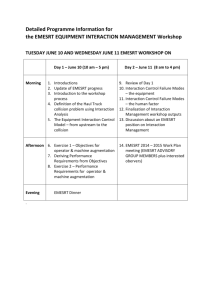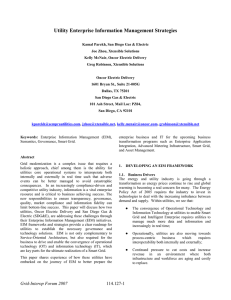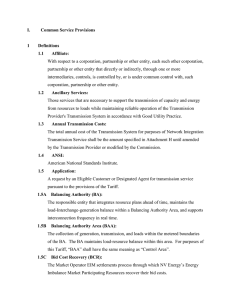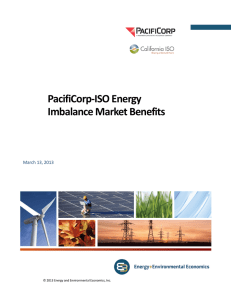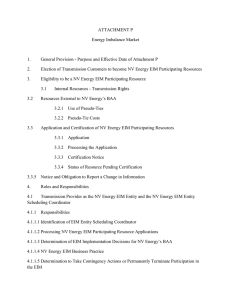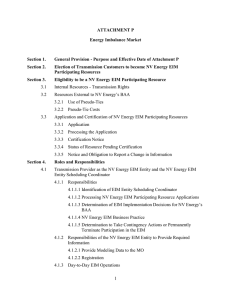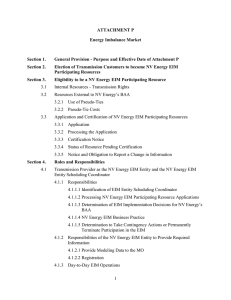Decision on Energy Imbalance Market Design
advertisement
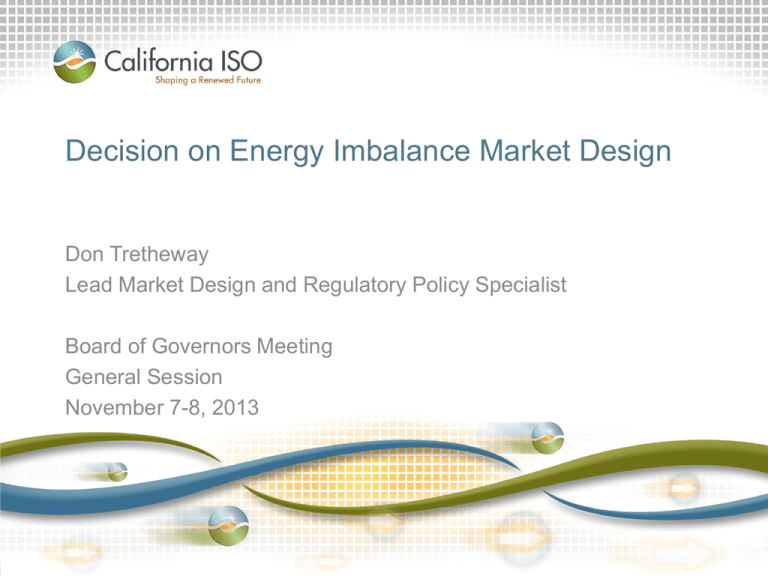
Decision on Energy Imbalance Market Design Don Tretheway Lead Market Design and Regulatory Policy Specialist Board of Governors Meeting General Session November 7-8, 2013 EIM allows balancing authorities in the West to voluntarily participate in a real-time market operated by the ISO. • Increased reliability: Provides information that improves operational awareness and responsiveness to grid conditions across its large footprint • Improved renewable integration: Helps integrate renewable resources by capturing the benefits of geographic diversity • Cost savings: Benefits all by serving energy imbalance needs from the most economic resources in a larger pool Page 2 EIM leverages the full functionality of the ISO’s advanced real-time market platform. Real-time dispatch Real-time unit commitment Hour-ahead process Market power mitigation 5-minute dispatch to meet energy imbalances Issues start-up and shut down instructions to short and quick start units Financially binding 15-minute energy schedule: internal generation, import, export Schedules hourly block imports/exports Mitigates bids with market power 3 EIM design provides flexibility for EIM balancing authority to develop rules within its tariff framework • Requirements for participation in its area – Transmission service – Forecast submission • Settlement of imbalances for non-participating resources and loads – Definition of load aggregation points – Utilization of resource specific locational marginal prices • Allocation of its neutrality accounts Page 4 EIM design includes elements to manage seams issues since multiple balancing authorities are participating. • Resource sufficiency evaluation looks at balance, feasibility and flexibility to address capacity “leaning” • Reciprocity for transmission used for EIM transfers between California ISO and PacifiCorp for first year Page 5 EIM design includes elements to ensure appropriate cost allocation. • Real-time congestion uplift impacts from the base schedules of other balancing authorities are managed • Neutrality accounts calculated for each balancing authority, considering EIM transfers where appropriate • EIM dispatch algorithm will include greenhouse gas bid adder for imbalance energy that transfers to the ISO Page 6 ISO has safeguards in place if unexpected market issues arise: • Authority to limit transfers between EIM balancing authorities • Market functionality to model flow entitlements between EIM balancing authorities • Ability to mitigate market power at the balancing authority level Page 7 ISO will conduct robust testing & market simulation. • Management will brief the Board on market simulation results in Summer 2014 – Review phase-in of EIM transfers if appropriate • If necessary, Management will seek Board approval to activate software functionality to address: – Significant impacts to real-time congestion between EIM balancing authorities – Market power at a balancing authority level Page 8 Management recommends the Board approve the proposal. • EIM has moved from concept to a design which will be operational on October 2014 • There is broad support for establishing an energy imbalance market in the West • Finally, the design is robust and will allow other balancing authorities to join the EIM expanding the benefits for all in the West Page 9



